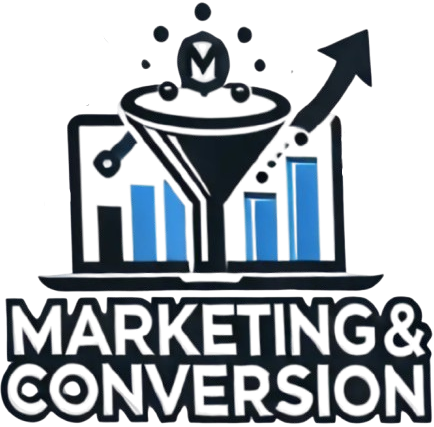
Are you a startup founder, serial entrepreneur, or product manager wondering about the cost of an eCommerce website? Are you looking to build a platform similar to Amazon or any other reputable e-commerce website?
eCommerce Website
An eCommerce website is a platform where users can buy products and services through the internet instead of going to a physical store. It can also be described as a platform where businesses can make online sales and receive payment for their products or services.
It is important to know the category in which your idea falls when estimating the cost of building an e-commerce website for your startup. This category includes sites such as Amazon, eBay, Craigslist, Gumtree, etc.
How Much Does it Cost to Create an eCommerce Website
To determine the precise cost of your eCommerce solution, you should take into account various factors, as follows:
- The type of web builder
- The complexity of the website
- The type of team
- The developer’s country of location
eCommerce Website Cost Defined by Type of Web-builder
The cost of building an eCommerce website varies depending on whether you are starting from scratch or utilizing web builders like Spotify, WooCommerce, and others. While custom websites are pricier than alternatives, they provide numerous advantages for individuals seeking a flexible, durable, and branded platform.
If you want to integrate your e-commerce app with your website, you will also require a custom platform. Additionally, your e-commerce project’s cost can be determined by its level of complexity.
Cost of eCommerce Website Defined by Complexity
The time needed to create an eCommerce platform is directly related to its complexity, which is determined by the set of user roles, functions, and features and their interconnections within the website. Creating smaller and simpler applications requires less time because they have fewer features, functions, and user roles. Therefore, basic apps with less complexity require less time to create.
eCommerce Website Costs Defined by Team Type
The cost of creating an eCommerce website is significantly influenced by the type of team. Do you find each team type unclear? Let’s provide you with some information to clarify them.
Local Development Company
This company is located in the same place as the startup. For instance, a US startup is hiring a software agency in the United States to handle its e-commerce development. Typically, this choice involves a significant financial investment, particularly for those in affluent countries.
Additional eCommerce Website Costs to Consider
Once you have determined the answer to the question “how much does it cost to create an e-commerce website?”, we can provide you with a sequential analysis of supplementary expenses that should be taken into account. View this as a tool to calculate the costs of expanding your solution for an E-commerce website. Let’s delve into the details:
eCommerce Web Design Cost
The purpose of this cost is to provide your website with excellent aesthetics and user experience. The cost will be allocated to layout, brand enhancement, and user experience design. You have the option to utilize an existing template or create a custom theme for your eCommerce website design.
You have the option to select low-cost or high-cost eCommerce web designs based on your budget and business goal. Now, let’s analyze what each option involves.
Payment Processing Cost for eCommerce
Including this often disregarded expense in your budget is crucial, as a payment processor that offers free integration still charges a fee. Various platforms have varying eCommerce pricing options.
Search Engine Optimization Cost for eCommerce Website
In order to gain traction and attract relevant traffic, every website should use a suitable eCommerce SEO strategy. This will enhance visibility on search engine platforms. It is more advisable to plan your SEO strategy from the beginning rather than modify it to fit new techniques.
The usual range for the cost of running SEO for your agency is typically between $2500 and $20,000.
Additional Dependables and Plugins
Here are some ideas of eCommerce tools to include in your development plan, as there are numerous services available to customize your eCommerce platform according to your business model’s requirements.
Content Costs for eCommerce Website
In order to have appealing sales write-ups for your website, it is necessary to enlist the assistance of a copywriter. The allocated budget for copywriting will be utilized for this purpose.
- Hiring a copywriter for blog posts and product descriptions
- Creation of videos
- Professionally taken images of the product
The cost of copywriting varies greatly depending on how complex your niche is, but generally, fees can range from $100 to $1000 per day. Make sure you provide a detailed brief to ensure an excellent outcome.
Summing Up all Additional E-commerce Website Costs
For a template/constructor-based website, the additional monthly fee would vary between $100 and $3000/month.
Freelancers
Freelance teams, acting independently, undertake projects on a project-by-project basis. These web developers are not permanent staff members of any particular organization and generally remain committed to a task unless a more advantageous opportunity arises. This employment model carries a significant risk of data breaches.
Outsourcing Agency
Offshore development agencies globally manage tasks for both startups and large enterprises. They offer a cost-effective solution for developing e-commerce websites. For instance, a US company could outsource its eCommerce development to a vendor based in India, adhering to this approach.
Things to consider when assessing the cost of an eCommerce website
When evaluating the expense of an eCommerce website, it is necessary to take various factors into consideration. These factors will directly influence the overall cost of the project. Below are some crucial aspects to consider:
- Website features and functionality: The more features and functionality you want for your eCommerce website, the higher the cost. Features like advanced search, product customization, user reviews, and inventory management require more development time and resources.
- Design and user experience (UX): A well-designed and user-friendly website is crucial for attracting and retaining customers. Custom designs and intuitive UX elements might increase the cost of pre-made templates.
- Platform selection: Choosing an eCommerce platform can significantly affect the cost. Some platforms are open-source (e.g., WooCommerce) with no initial licensing fees, while others (e.g., Shopify) have monthly subscription costs and transaction fees.
- Integration with third-party services: If you require integration with external systems, such as payment gateways, shipping carriers, or CRM tools, it can add to the cost as it involves extra development effort.
- Mobile responsiveness: Ensuring your website works well on various devices and screen sizes is essential. Creating a responsive design may increase costs but is necessary for reaching a broader audience.
- Product database size: The number of products and categories you plan to offer affects the complexity of the website. A larger product database may require more backend resources and impact the overall cost.
- Security and compliance: If your eCommerce website deals with sensitive customer information, you must invest in robust security measures and comply with data protection regulations. This might require additional security software and regular audits.
- SEO and digital marketing: Investing in SEO-friendly features and marketing tools can enhance your website’s visibility. These elements may require additional development and can impact the overall cost.
- Content Management System (CMS): Choosing the right CMS for managing your website content can influence the overall cost. Customizing a CMS to fit your specific needs might require more resources.
- Maintenance and support: After the website’s launch, ongoing maintenance and support are essential. Budgeting for regular updates, bug fixes, and customer support is necessary to keep the site running smoothly.
Calculating eCommerce website cost
We will now explain the process of calculating the cost of your eCommerce website or storefront using a hypothetical example.
Define your requirements and goals
To start, it is important to establish a clear outline of the requirements and goals for your eCommerce website. This includes considering factors such as the number of product categories, the preferred design style, the specific functionality needed (such as product filters, search, and user reviews), and the target market. These aspects will have an impact on the overall cost of your website.
Assume our hypothetical company “FashionForward” desires a stylish website design that includes product categories such as clothing, shoes, and accessories. Additionally, they require features like size filters, customer reviews, and an easily navigable checkout process.
Estimate design costs
The expense of design is impacted by the intricacy and innovation of the visual aspects on your website, such as the logo, banners, and overall layout. To achieve a design that aligns with your brand, it is recommended to enlist the services of a proficient web designer or agency who can create a personalized design.
The formula for estimating design costs is to multiply the design hourly rate by the number of design hours worked by a web designer.
FashionForward chooses to collaborate with a web design agency at a rate of $50 per hour for an anticipated duration of 100 hours, resulting in an estimated design expense of $5,000.
Calculate development costs
The total development cost will be influenced by the complexity of the features you need and the size of the website, which encompasses frontend and backend development, shopping cart setup, and payment gateway integration.
The formula for estimating development costs is calculated by multiplying the development hourly rate by the number of development hours.
FashionForward employs a development team that has an hourly rate of $80. The development team predicts that the development process will require 300 hours. Therefore, the approximate cost of development would be $80 multiplied by 300, resulting in a total of $24,000.
Include functionality costs
If you require additional functionality beyond the standard eCommerce features, such as a product recommendation system or social media integration, please consider factoring in these costs separately.
FashionForward is interested in implementing a customized product recommendation system, which comes with an added cost of $3,000.
Factor in fulfillment costs
When considering fulfillment costs, it is important to take into account the expenses associated with inventory management, order processing, and shipping. If you choose to handle these tasks internally, you should also consider the costs related to storage, packaging, and shipping. On the other hand, if you opt for dropshipping, where a third party takes care of fulfillment, it could potentially affect your profit margins.
FashionForward utilizes a third-party fulfillment service which incurs a fee of $5 for each order. They predict that they will fulfill 500 orders on a monthly basis, thus leading to a monthly fulfillment expense of $5 multiplied by 500, amounting to $2,500.
Estimate marketing costs
When considering expenses for marketing, it is important to include digital marketing, social media campaigns, influencer collaborations, and search engine optimization (SEO) as they are essential for driving traffic and increasing sales.
FashionForward sets aside $10,000 as upfront costs for their initial marketing campaigns.
Account for maintenance costs
Estimate the monthly or yearly expenses for regularly updating, conducting security checks, and covering server costs in order to maintain your eCommerce website.
FashionForward expects to incur monthly maintenance expenses totaling $200.
Add other essential costs
Additional expenses that may fall under miscellaneous category could encompass the likes of domain registration, SSL certificate, content creation, and customer support tools.
FashionForward consists of $500, which covers domain registration, SSL certificate, and content creation.
Calculate the total cost
To determine the final cost of building and running your eCommerce website for the first year, simply calculate the sum of all the costs incurred in the previous steps.
To calculate the total cost, add up the costs incurred in design, development, functionality, fulfillment, marketing, maintenance, and other vital areas.
The total cost can be calculated by adding up the costs of $5,000, $24,000, $3,000, $2,500, $10,000, $200 multiplied by 12, and $500, resulting in a total cost of $50,700.
Consider future expenses
When planning your long-term budget, it is important to remember that the initial cost in the first year is just the starting point. You should take into account future expenses such as website enlargement, design updates, implementation of new features, and continuous maintenance.


